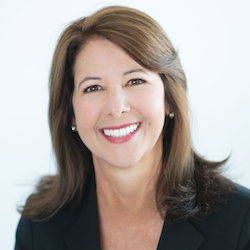
Nine months into the execution of Capital Senior Living’s SING strategy — stabilize, invest, nurture and grow — company performance suggests that the third quarter “was the low point of our turnaround and we are now exiting that trough,” CEO Kimberly Lody said Friday during Capital’s latest earnings call.
Revenue in the quarter, at $111.1 million, was down $4.5 million, or 3.9%, from the same quarter of 2018, and same-community revenue, at $108.6 million, was down 3.8%. Occupancy, at 81.3%, was down 120 basis points compared with the third quarter of 2018, and same-community occupancy, at 82.3%, was down 340 basis points compared with the third quarter of 2018 and 130 basis points compared with the second quarter of 2019.
Income loss from operations in the quarter was $8.1 million, the company’s net loss was $20.7 million and adjusted net loss was $12.3 million, the company reported.
“When we think about the third-quarter results, the phrase I like to use is, it reflects where we have been, not where we are going,” Lody told McKnight’s Senior Living in an interview after the earnings call.
“In the first nine months of the year, we made purposeful investments in our people and our product,” Chief Financial Officer Carey Hendrickson added. “We knew that that would impact our financial results in the short term, but we were doing it with an eye to the future, building the platform for improvement in our future financial performance and creating long-term value for the company.”
‘Turnaround plan has taken hold’
Positive signs in the quarter suggest that “our turnaround plan has taken hold,” Lody said. For instance, contract labor use is down, and employee retention is improving.
Total move-ins increased 7% sequentially from the second quarter, and for the first time since mid-2018, move-ins outpaced move-outs, the company reported. Also, physical occupancy increased in August, September and October.
The supply and demand equilibrium is beginning to normalize, she said, although construction and new openings remain high in approximately one-fourth of the markets in which Capital operates.
“But the thing that we’ve really emphasized in our organization is, we need to sell our value and our value proposition,” Lody said. “We are very strong as a value player in the marketplace. We provide a lot of services to our residents for very reasonable, affordable prices, and we’ve just continued to strengthen that message with our teams and out in the broader communities in which we operate, and that really seems to be working for us.”
Brandon Ribar, who joined the company in September as chief operating officer, told McKnight’s Senior Living that he has spent much of his first two months in the company’s communities and working with local and regional leadership teams.
“When I walk all of our communities, I get a chance to interact with our residents and their families and our staff, and the vibe is very positive,” he said. “That gives me great comfort that people are enjoying spending time in our communities, and it’s now being reflected in our numbers around the trajectory of our move-outs and the net positive move-ins that we’ve seen just in the last couple of months.”
Hendrickson pointed to the Oct. 1 closing on the $68.4 million sale of two non-core independent living communities — in Springfield, MO, and Peoria, IL — with net proceeds of $14.8 million, as one example of optimizing the portfolio and improving the company’s financial position.
Another step in that direction, he said, was the Oct. 22 agreement with the real estate investment trust now known as Healthpeak Properties (formerly HCP). The agreement will put an early end to a nine-property master lease with HCP that originally was scheduled to mature in October 2020. Four of the properties will transition to new operators as early as January, with the remainder expected to be sold by mid-2020, according to Capital.
The $13.8 million annual cash lease expense associated with the nine communities will be eliminated when the transactions are complete, Capital said. The company will pay a $1 million early termination fee to Healthpeak.
Looking to the future
Lody said she has been “very pleasantly surprised” at how quickly those in the organization have grasped initiatives and worked to implement them.
“While change is tough, we’re really pleased with where we are in the execution of the plan, and I couldn’t be more proud of the team and their ability to move quickly and really bring some pretty salient points to fruition in a relatively short time period,” she said.
Hendickson said he is “looking forward to the progress that I know we’re going to make.”
“If I look back at this time last year, I feel so much better about where we are today than where we were then,” he said.



